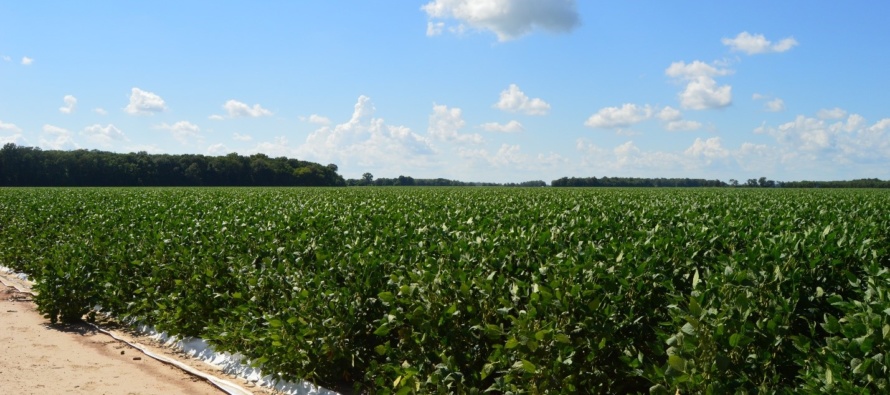How to Determine Soybean Irrigation Termination Timing

Related Articles
- 2010 Soybean And Corn Variety Trial Data 3
- 2010 Row Crop Short Course Video Links 0
- March Ag Supply and Demand Report Recap 0
Latest Tweets
While some acres have finished and combines have started moving across fields, other acres that were planted later are still progressing through late reproductive growth stages. With that said, a lot of our state’s acres have just reached or are beginning to reach the point where it’s time to make the decision on when to terminate irrigation. Evaluating both the soybean stage of development and current soil moisture availability will be necessary to make this decision.
The first step in deciding when to terminate irrigation, regardless of soybean planting date, is to properly identify what growth stage the crop is in. This article on Identifying Late Season Soybean Growth Stages contains both descriptions and pictures that will help in identifying the key growth stage for irrigation termination. Keep in mind that if you are growing an indeterminate variety, observations for identifying the growth stage should come from pods in the upper four nodes of the plant. In determinate varieties, observations can be made anywhere on the plant.
With respect to yield loss because of drought stress, previous research suggests that a yield reduction will occur if soybean do not have adequate soil moisture during pod fill (beginning at the R5 stage). This yield reduction would simply be a result of not having enough moisture for seed to reach their full potential. Therefore, the goal in timing irrigation termination is to make sure that adequate soil moisture is available to ensure that the soybean seeds reach maximum size.
Specifically, if the crop has reached the R6.5 growth stage, when the soybeans separated from the pod membrane, and adequate soil moisture is present, irrigation can be terminated at this point. In the case of indeterminate varieties, be mindful of the fact that there may be some pods in the lower part of the plant that are approaching R7 while pods in the upper four nodes still need water to finish filling. Remember, terminating irrigation too soon can result in smaller seed and therefore reduce the overall yield potential. As discussed in the Identifying Late Season Soybean Growth Stages article, the easiest way to identify the R6.5 growth stage is to open the pod, and observe if the seeds easily separate from the protective membrane within the pod. If so, irrigation can be terminated.
Soil moisture sensors are excellent tools to aid in the decision of when to terminate irrigation in soybean. These tools coupled with proper identification of the crops growth stage can provide the information needed to estimate the time until the crop reaches physiological maturity and the availability of soil moisture up to that point. For example, if the soybean crop is at the R6 growth stage (seed completely fill the pod and are “squared off”), a timely rainfall or well-timed irrigation event could allow that crop to reach physiological maturity. The expected time from R6 to R6.5 will vary, depending on planting date and maturity group. But, generally speaking, soybean will require 7 to 10 days to transition from R6 to R6.5. The later the planting date, the later the expected date at which the R6.5 growth stage is achieved so for some of our acres, we still have several days to go to be able to safely terminate irrigation. Be mindful of environmental and field conditions in later planted soybean to ensure that an irrigation event during the early Fall will not create extra challenges for harvest operations.




Let me tell You a sad story ! There are no comments yet, but You can be first one to comment this article.
Write a comment